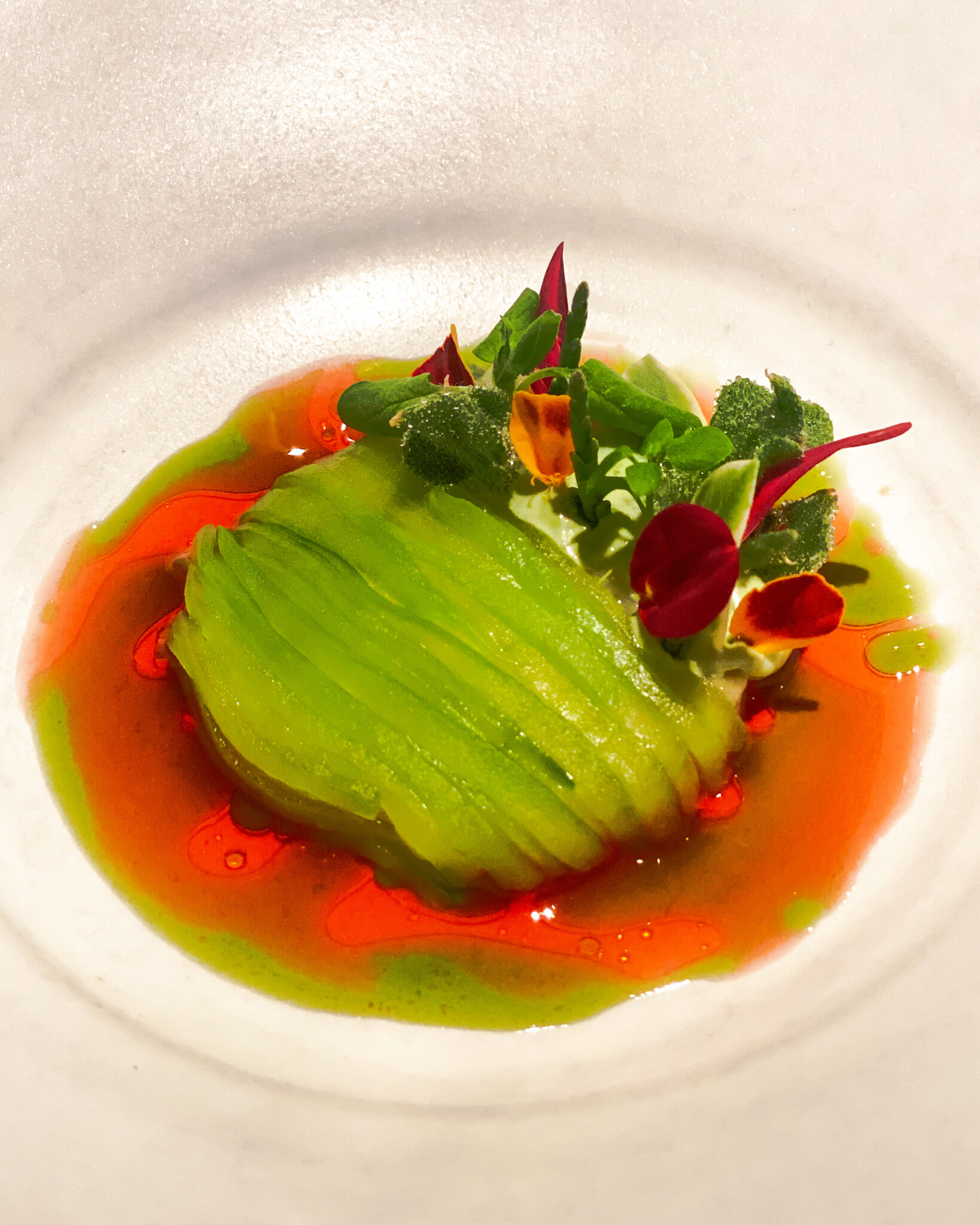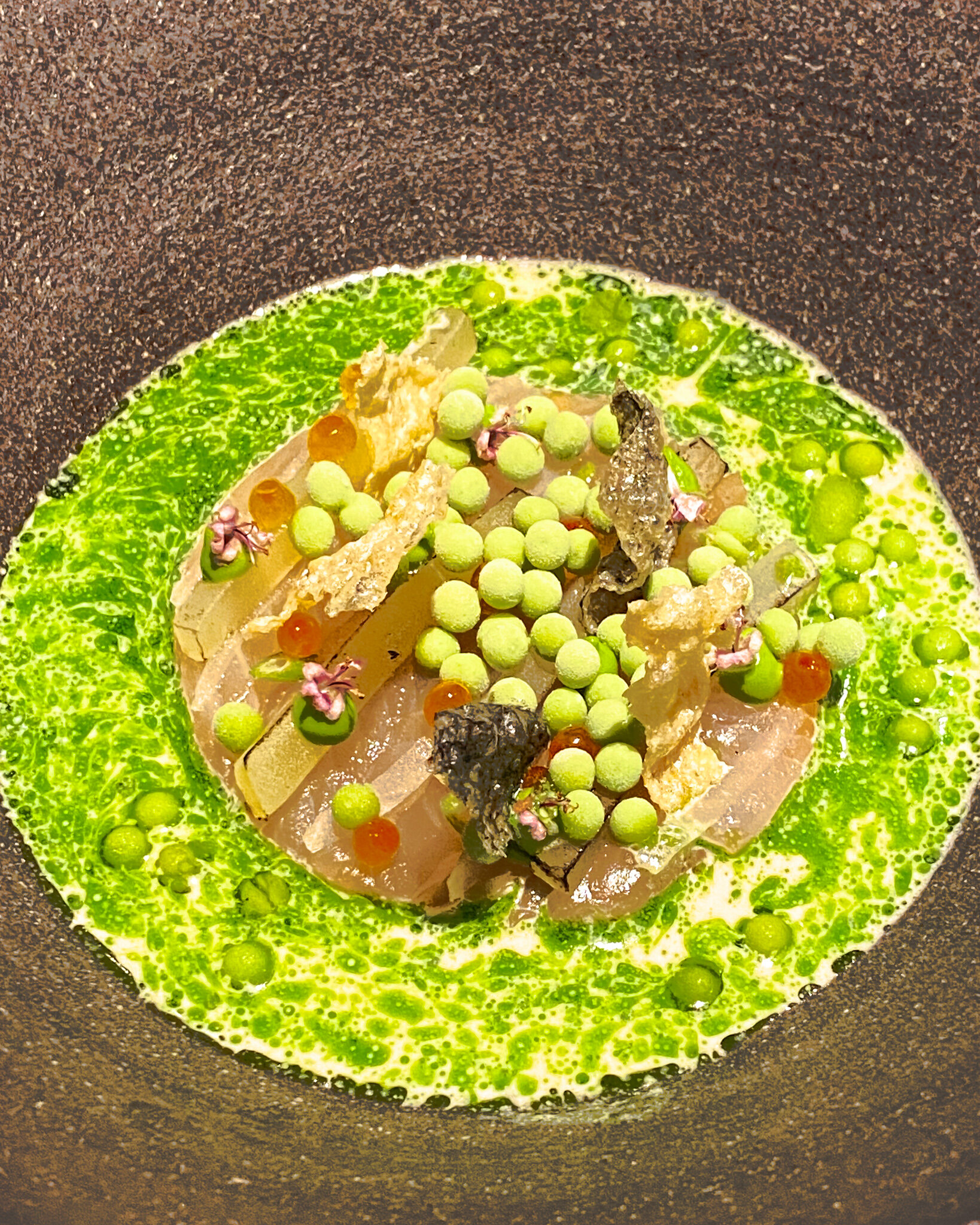Rutz Berlin: A Culinary & Wine Experience
Our Three-Michelin-Starred EVENing
We were in Berlin on my birthday and wanted to have an outstanding experience to remember the occasion. Berlin has more Michelin star restaurants than any other city in Germany, so when it came to choosing one, the wine list first drew us to Rutz. Its three Michelin stars made it the icing on the cake.
The history behind Rutz, which has now become an institution in Berlin, started in 2001 as a wine bar by then-rising star sommelier Lars Rutz. After he passed from cancer, many sommeliers have graced the halls of this establishment. Then chef Marco Müller joined the team, and a few years later, in 2007, he won the first Michelin star, and in 2016, the second star, and by the time we dined in 2021, they had just achieved their third.
Müller is committed to the region and the season. His close cooperation with regional producers and his proximity to producers is reflected in the “Nature & Aromas” menu we tried. Each dish is showcasing his innovation and creativeness in ingredients, preparation, and presentation. Fresh ingredients from many sources; leaves, buds, shoots, roots, woods, and berries combine seamlessly with fish and vegetables. They were brought together with sauces that are both light and added depth, a perfectly combined balance.
The Inspiration Menu:
Pine Langoustine & salt meadow herbs, with cucumber
Potato Purée, peel & ash, with Hamachi & Caviar
Springwater Trout in buttermilk & parsley
Veal, with onions & wild leek
Childhood Memories; Beans & Pork
Shiso leaves, Japanese knot wood & cherry yogurt
Our Wines:
Nancy Grossmann joined the Rutz team as sommelier, and in 2020 she was named Germany’s Sommelier of the Year. She was one of the first women in Berlin to attend the German School of Wine. She followed this by traveling around to Europe’s wine countries before landing back in Berlin. We share a desire to learn through travel, “she prefers to taste wines where they are made, at the winemaker’s vineyard.”
We put her to the test by requesting a German wine pairing with each course. These are my notes, but I realize I did skip over a wine. Well, what can I say, it was my birthday? I’m actually pretty surprised at how much detail I noted at the time.
1998 JB Becker, Rheingau, Wallufer Oberburg
Kabinett halbtrocken, 10.5%
Golden in color
Aromas of burnt honey and caramel (the aging shining through)
So balanced this off-dry Riesling is anything but fruit dominated; it’s still fresh with flavors of apricot - so good 🌟
It was paired with the potato, Hamachi & caviar.
2019 Rosé Weingut Aldinger
Untertürkheimer Gips, Troken, 12.5%
A hint of pink, but mostly golden in color
Primarily minerality on the nose with very little fruit.
Perfectly integrated acidity; such minerality 👏
Not your typical Rosé, if you tasted blind, you might assume it was white wine. Trollinger is the grape; it comes from Alto Adige where it is called Schiava Grossa.
It paired nicely with the trout.
Upon further research, I discovered this wine was rated the best Rosé in Germany.
1997 Forstmeister Geltz-Zilliken
Saarburger Rausch, Riesling Auslese, Mosel 7.5%
As a late harvest wine, with this age, we expected that it would be overly sweet, but it wasn’t at all.
Fresh and floral on the nose. A medium-bodied wine, yellow stone-fruit but not overripe, ended with a pleasant, lingering minerality to the finish.
It held its own and paired perfectly with the veal.
2016 Schlossberg Bernhard Humor, Hecklinger Schlossberg
Spätburgunder (Pinot Noir) Baden Baden, 13%
The color is almost transparent
On the nose, there was more minerality than fruit
Medium-bodied, berry fruits, with hints of strawberry, touches of stony rocks; outstanding balance of fruit and acidity.
Easy to drink; an enjoyable wine with a touch of tannins for a fine structure.
2017 von Hövel
Saar Riesling Kabinett 8.5%
Aromatic, pink grapefruit
It’s fresh despite the sweetness
Tasting the wine before the desert; it was all about sweetness. But, tasting the wine with the food, the acidity came alive and brought out the minerality in the wine.
There was not a troken (dry) Riesling in the mix, and for someone who has stated, “I only like dry wines,” I’ll be plating myself a healthy serving of crow.















